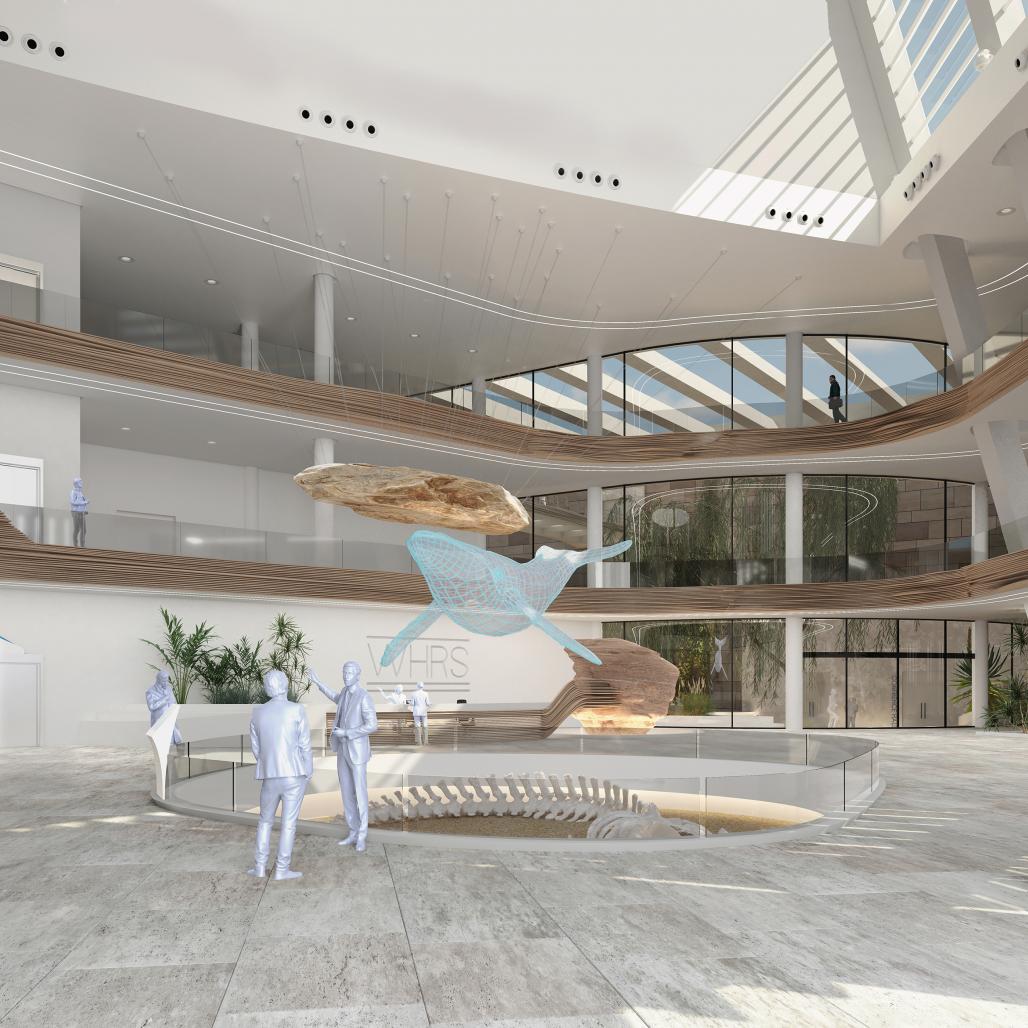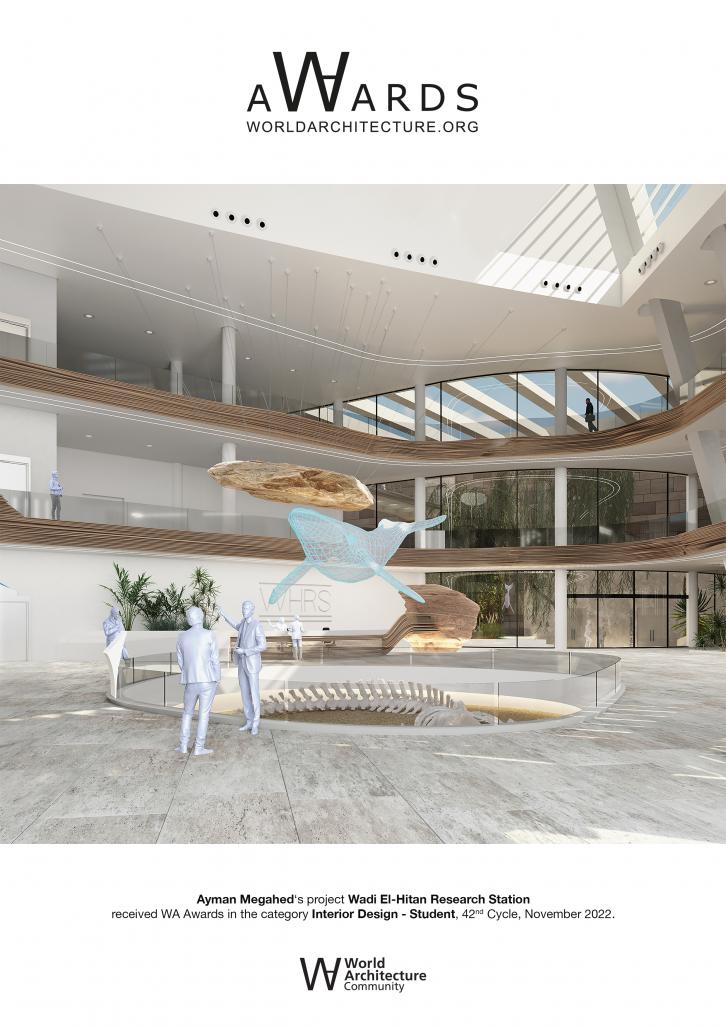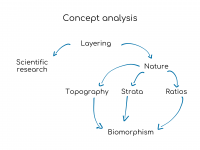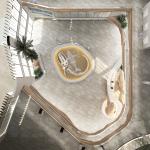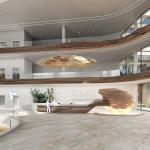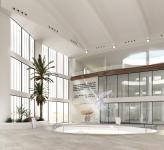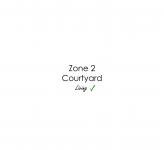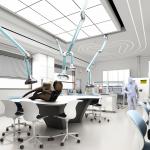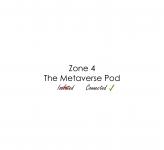The goal is to optimize the work and living environment for isolated researchers through a biomorphic approach, through the following zones:
1- A statement: Reception.
2- Living environment: Courtyard.
3- Work environment: Preparation lab
4- Overcoming isolation issue: The Metaverse pod.
- This Project aims to develop the research infrastructure in Egypt, especially in the field of paleontology as Egypt has rare fossils which document the process of the evolution of whales. Also, the scientists of paleontology face many challenges when it comes to working in the western desert of Egypt. Subsequently, this project helps the scientists in doing their jobs in the best way possible while maintaining their physical & mental wellbeing.
- However, based on modern studies it is proven that natural ratios are the best way to maintain the good wellbeing of people inside buildings, especially in such isolated environments. This theory was applied in this project through a biomorphic approach which is to simplify natural patterns into the space and reflecting the purpose of the project.
- Using modern science and technology the project achieved the concept of connecting the isolated through the recent technological invention the METAVERSE to push the limits even further for the comfort of the users.
The project was studied and designed by applying the following SDGs:
8: Decent Work and Economic Growth.
9: Industry, Innovation, and Infrastructure.
11: Sustainable Cities and Communities.
IMPORTANT NOTE:
The requirements and needs regarding the design of this facility were collected through surveys and site visits to researchers working in the region to make an accurate solution for their problems.
Affiliation:
Modern University of Modern Science & Arts (MSA).
2022
- The project facilities are powered by solar panel stations on top of the buildings.
- There is an eco-friendly sewage treatment facility built nearby to reuse water waste for vegetation. Also, this area of the Egyptian west desert has rain throughout its winters so collecting rainwater is applicable.
- The window openings are layered with shading blades to reduce the heat of the sun.
- Natural ventilation is applied through several internal courtyards and window openings facing the north.
- Most of the used materials are from the surrounding environment to reduce CO2 emissions and isolate the interiors from summer heat.
- Elements from the nature are included in the design to relate the interiors to the surrounding nature.
Designed by: Ayman Megahed
Supervised by: Professor Dr. Ahmed Abdelhalim - Professor Dr. Dalia Ezzat - Professor Dr. Hoda Madkour - Professor Dr. Ola Hashem - Professor Dr. Rasha El Zeiny - Lecturer Assistant Mai Othman.
Wadi El-Hitan Research Station by Ayman Megahed in Egypt won the WA Award Cycle 42. Please find below the WA Award poster for this project.
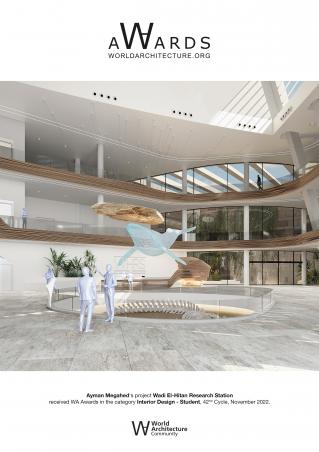
Downloaded 0 times.
